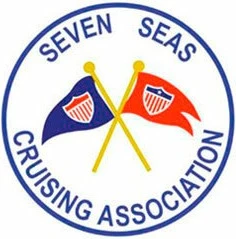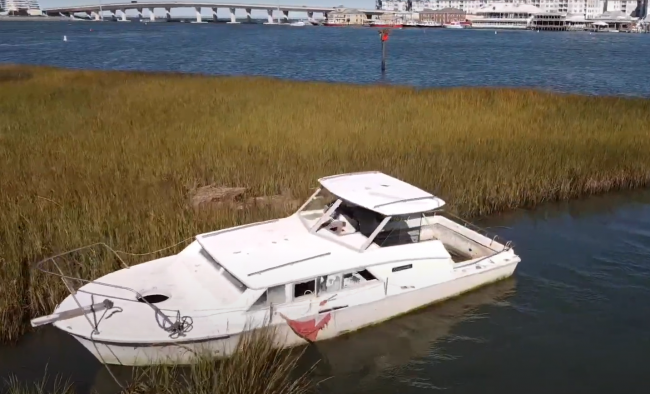
The soreness upon our eyes of a sinking, dilapidated boat on any waterway is unmistakable. And there appears to be more of them than ever. Landscapes and viewsheds are increasingly impacted by trash and discarded debris from the uncaring and inconsiderate among us. When a derelict vessel rests on its side in a marsh or swings around an anchor unvisited for months or years on end, questions abound. Who owns that boat? Why can’t they take care of it? Can’t the authorities tow it away?
The answers to those questions are never easy and usually only result in more questions. Abandoned and Derelict Vessels (ADV) have become such a nuisance across the U.S. that all manner of study groups, solutions and actions have been devoted to the problem.
The dilemma is that for every reasonably offered resolution someone, or some agency, injects an impediment into the mix. For instance, there is no funding for moving the vessel. That is, no one has a budget for cleaning up someone else’s mess. Then there is no easy way to take ownership of property in order to destroy it, regardless of the condition it is in or the hazard that it may be causing. Laws are so lax or ineffective that fining owners of ADVs are usually insufficient to force compliance. Owners can’t be found, or they dodge attempts to be identified. Disposal requirements and regulations are immense, if not outright impossible to follow. Bottom line, there’s a lot of talking, conjecture, handwringing and, ultimately, no action in many locations while the problems grow worse.

Waterway Guide Media has followed the ADV issue for several years through its work monitoring decisions of the Georgia Department of Natural Resources related to ADVs and participation in the Virginia ADV Work Group. What’s clear is that there is no uniform policy or procedures in place across municipal, state, or federal agencies to deal with the escalating problem of what to do with boats that decay very slowly given their fiberglass hull construction and, oftentimes, aluminum and stainless steel components.
Fortunately, there are a few bright spots and some success stories. The New York City Department of Parks and Recreation is responsible for over 170 miles of shoreline and some 15 marinas. The chief of waterfront and marina operations, Nate Grove, has overseen the removal of some 300 ADVs over the past seven years, according to a recent article in the New York Times. With pluck and determination, he has managed to tackle the problem, much to the delight of those who looked at the ADVs for years wondering what could be done. And, he has a couple hundred more to go in his jurisdiction alone, which is only a small part of New York’s waterfront. The state of California has developed some guidelines and funding strategies that seem to be taking hold. And other states are taking notice.
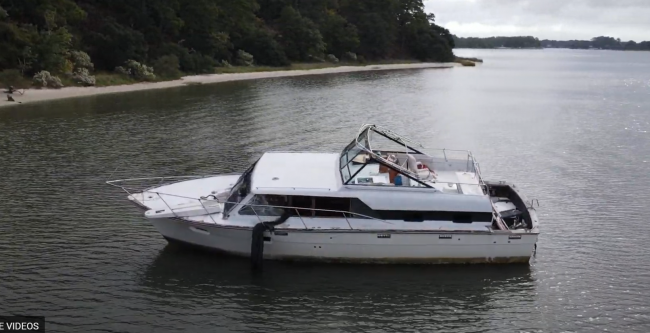
In Virginia Beach, VA there’s a similarly determined effort that has resulted recently in the removal of a single ADV from near First Landing State Park. But that effort took the commitment of one person and donations from the public because there were no alternatives, only impediments from every direction. The Virginia Beach story is uplifting, when seen from the perspective of an individual tackling a problem and navigating avenues to success. But it’s a story about only one boat among many that mar the city’s and surrounding waterways.
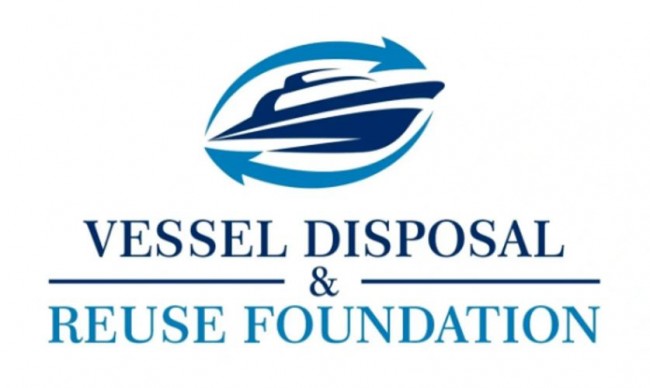
Mike Provost is a retired Navy officer who acted decisively and tenaciously to achieve the removal of an old boat from a much-used waterway. Without his efforts it most likely would still be partly submerged within view of one of the finest state parks in the world. Provost figured out a way to remove the decaying hulk while simultaneously forming the Vessel Disposal and Reuse Foundation (VDRF).
The lessons learned from this single undertaking by Provost and his team was eye-opening, he says. Notwithstanding identifying the owner, coordinating with all manner of bureaucracies, locating equipment and a disposal site; he now deals with insurance requirements and various conditions associated with disposing of old boats. Why does he do it? Provost says, “Our mission statement sums it up. We help waterways achieve sustainable health through removal of abandoned and derelict vessels, public outreach and education; and the acceleration of disposal and reuse pathways for unwanted fiberglass boat hulls.” His mission is to tackle similar problems around his hometown and elsewhere.
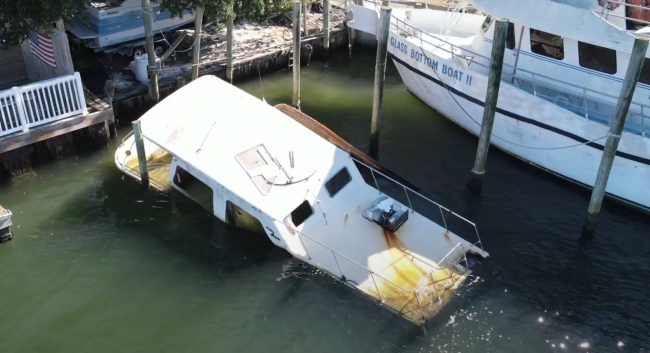
VDRF is removing another ADV in mid-February 2022 and contracts and approvals are in place to remove four additional boats near the Lesner Bridge in Virginia Beach. If his successes at First Landing State Park and elsewhere in Virginia Beach are any indication, then VDRF has done what the state’s bureaucracy, and that of many other states, have not been able to do; stay focused, overcome obstacles, act assertively and get the job done. Dedication is refreshing, and Provost says he is just getting started.
Next in this series: Mike Provost explains how to break down an old fiberglass boat, what to do with it, and how fiberglass hulls can be harvested and used to replace coal in kilns.
Note: Through Provost’s efforts others can join in, either with financial support and advocacy of VDRF, or create their own solutions using the VDRF model. Local businesses have taken notice; VDRF now has corporate sponsors to include Wasserhund Brewing Company, Tidewater Staffing, Dockside Restaurant, and Branch Group Construction.

Due to the high cost of ADV removals, VDRF frequently hosts fundraising events providing locals the chance to get involved and fill the gap left by city, state, and federal inaction. VDRF’s next event is the Sunk Ship Sendoff on February 26th from 2-6 pm at Dockside Restaurant in Virginia Beach. Join VDRF, drink great local beer, and become part of the solution.








